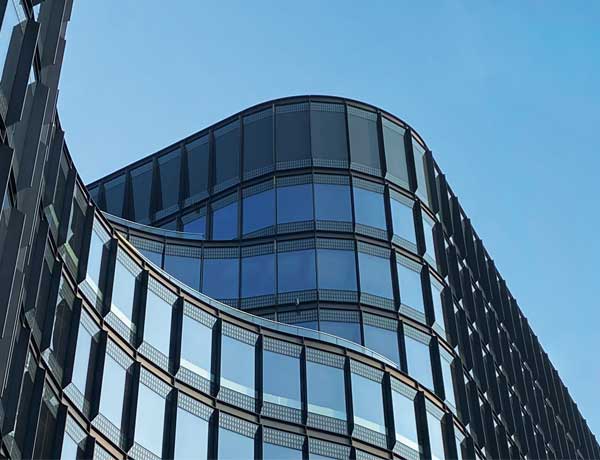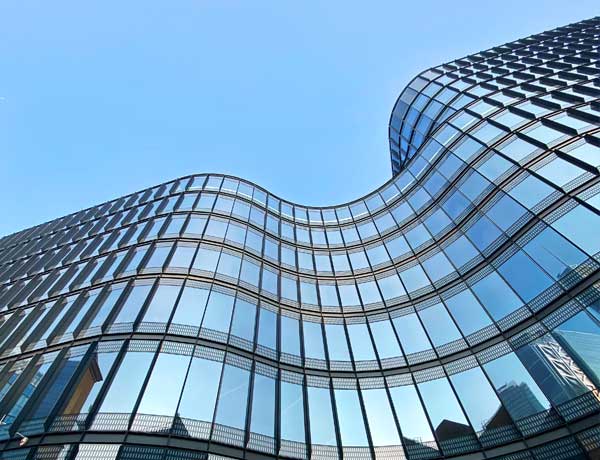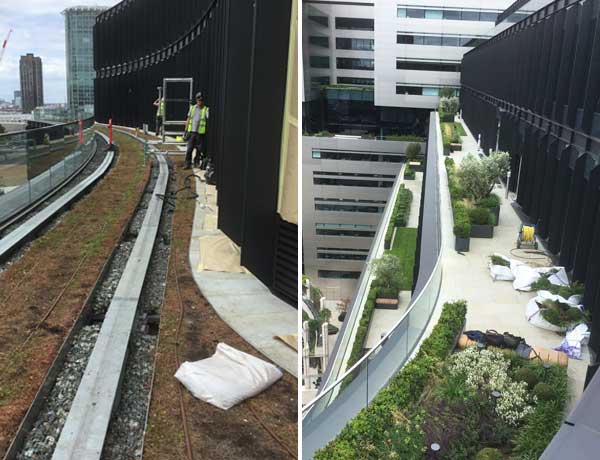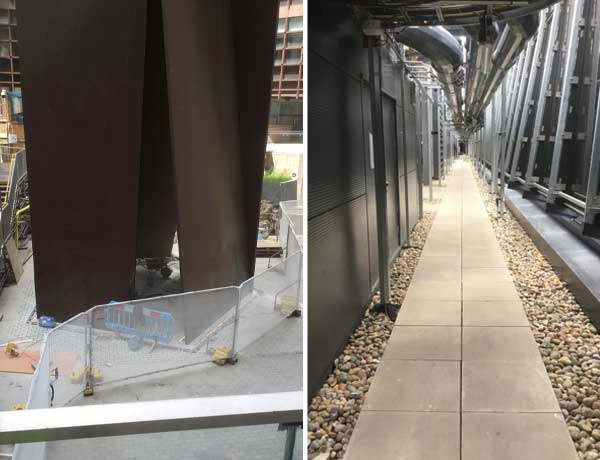British Land and Sir Robert Mc Alpine have delivered the next significant stage as part of their 10-year redevelopment of the Broadgate framework. The 520,000sq ft development designed by Hopkins Architects, in collaboration with Universal Design Studio includes 490,000sq ft of light airy office space, 90,000sq ft of new shops, boutiques and restaurants across 3 levels, with the addition of a ninth-floor restaurant with terraces for alfresco evenings. 20,000sq ft of outdoor terraces were also built into the complex across 5 levels, designed with bright, colourful gardens to attract more birds, butterflies and bees to Broadgate.
With the intention to prioritise sustainability and environmental consideration, 100 Liverpool Street is British Land’s first net zero carbon development. Reaching this achievement involved retaining over 50% of the original structure from 1988, including all of its foundations. This resulted in 7,521 tonnes of carbon, additionally using recycled waste aggregates in place of concretes and cement while optimising light and heat where possible also aided the development’s environmentally friendly nature. 100 Liverpool Street achieved a remarkable Outstanding BREEAM score, with a final post-construction certification of 89.2%
Radmat Building Products for Lindner Prater, were tasked with providing exceptional insulation and waterproofing to accompany a unique design shape and protection for multiple rooftop terraces. Each level of 100 Liverpool Street features unique curves, which allows more sunlight for people relaxing in the Broadgate Circle. This creative thinking and smart design leaves a complex situation with insulation. Radmat’s ProTherm Quantum® PLUS+ VIP inverted roof system was the ideal solution, as it supplies exceptional thermal outcome while completely minimising space. Radmat’s ProTherm XPS Infill allowed the design to be cut to fit the unique shape and curves of the development. To meet a U-value of 0.13m2K ProTherm Quantum Plus+ was installed at various roof levels, careful consideration was taken to the setting out and the junction details especially at Level 8 where it followed the curvature of the façade below. In order to insulate this area, the plan layout was staggered/facetted adjacent to the curves.
20,000 sq ft of rooftop terraces and gardens required tried and trusted waterproofing, hence Radmat’s PermaQuik Hot Melt Bitumen Waterproofing System was chosen due to its toughness and reliability for green roofs. It is installed with zero falls and certified for ‘the lifetime of the building’. PermaQuik was also applied to many of the floor levels including the base of the Fulcrum Sculpture to ensure its longevity. It was decided to lower the Fulcrum insitu to preserve the integrity of the sculpture. This not only presented an engineering challenge but also a significant logistical challenge as it was in the centre of the main pedestrian exits to the station that couldn’t be closed. The addition of PermaQuik to the base will ensure it is waterproofed and secure for many years to come
ReadySeal Liquid Applied System was used in areas where it was more suitable such as detailing.











